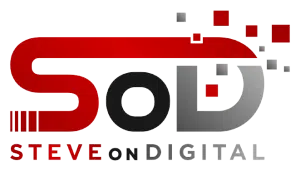Aligning IT With Business Goals: Prioritizing Business Outcomes In IT Strategies
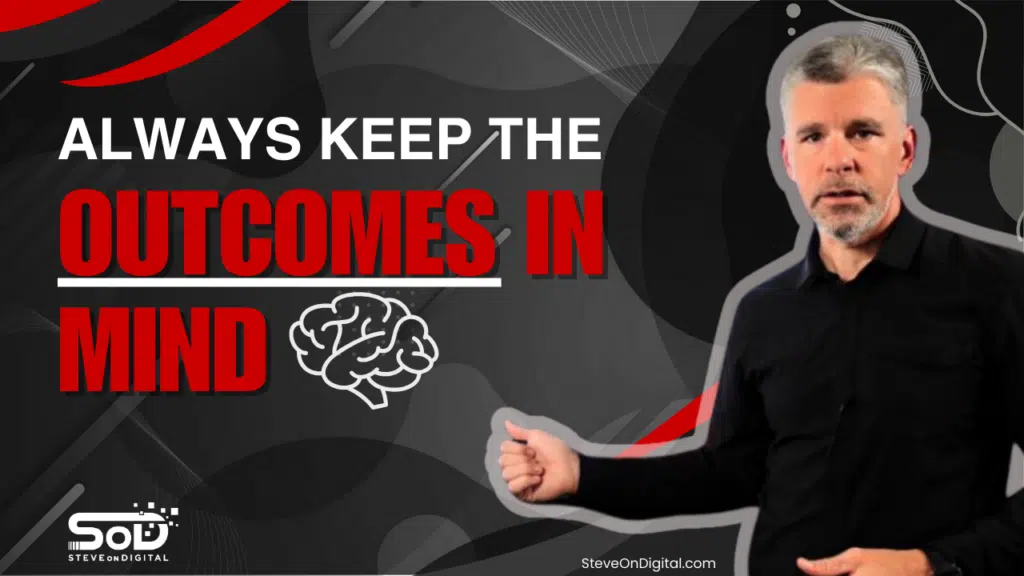
Aligning IT with business goals is crucial for any organization aiming to succeed. By ensuring IT initiatives align with business objectives through business IT alignment as a strategic approach, companies can boost performance, drive innovation, and achieve growth. This alignment bridges the gap between technology and strategy, helping to deliver tangible business outcomes. Understanding business goals and objectives is the first step. Goals are the company’s long-term ambitions, like increasing market share or enhancing customer satisfaction. Objectives are specific, measurable steps that help achieve these goals. By aligning IT with these elements, businesses can optimize operations, improve efficiency, and enhance customer satisfaction. I’m Steve, a digital transformation expert with a strong background in electrical engineering, an MBA, and a master’s in Project Management. I excel at helping SMEs navigate the digital landscape with practical insights. Let’s begin! Understanding Business Goals and Objectives Defining business goals and objectives is the first step toward successful IT alignment. Goals are the overarching ambitions of a company, such as increasing market share or enhancing customer satisfaction. Objectives are specific, measurable steps that help achieve these goals. Defining Business Goals Business goals represent the long-term vision of a company. They provide direction and set the stage for strategic planning. For instance, a goal might be to become the market leader in a specific industry within five years. Identifying Business Objectives Objectives are more specific than goals. They are the actionable steps needed to reach those broader goals. For example, increasing annual revenue by 15% or reducing customer churn by 10% in the next year are clear objectives that support the overall business goals. The Role of IT in Achieving Business Outcomes Information technology plays a pivotal role in driving business outcomes by aligning IT with business strategy to ensure that IT systems effectively support overall business goals. Here’s how IT can influence key business outcomes: Enhancing Customer Satisfaction IT solutions can significantly improve the customer experience. For instance, implementing a robust CRM system can help manage customer interactions more effectively, leading to increased satisfaction and loyalty. According to a survey, companies with strong customer engagement strategies see a 55% higher customer retention rate (Planview). Improving Operational Efficiency Streamlining business processes through automation and advanced IT systems can lead to significant cost savings and productivity gains. For example, integrating ERP systems can optimize supply chain management, resulting in a 20% reduction in operational costs (ClearPoint). Driving Innovation and Growth IT enables businesses to innovate by providing tools and platforms that support the development of new products and services. Companies that prioritize IT alignment see a 77% increase in their ability to execute new growth strategies (ClearPoint). Developing an IT Strategy Aligned with Business Priorities Aligning IT strategies with business priorities is crucial for achieving success in today’s digital age. This section outlines a step-by-step guide on how to create an IT strategy that aligns seamlessly with the overall business strategy. Assessing Current IT Capabilities Before developing an IT strategy, it is essential to view it business alignment as an ongoing project that requires constant evaluation and communication between IT and business departments. This involves understanding the current capabilities and identifying gaps that need to be addressed. Steps to Assess Current IT Capabilities: Evaluating IT capabilities helps in understanding where the organization stands and what improvements are necessary to support business objectives. Setting IT Goals that Support Business Objectives Establishing IT goals that align with business objectives is essential for achieving strategic alignment. These goals should be specific, measurable, achievable, relevant, and time-bound (SMART). Steps to Set IT Goals: By setting aligned IT goals, you ensure that IT efforts are focused on achieving business outcomes. Creating an IT Roadmap An IT roadmap outlines the steps necessary to implement IT initiatives that align with business goals. It provides a clear path for achieving IT and business alignment. Steps to Create an IT Roadmap: Creating a detailed IT roadmap helps in planning and executing IT initiatives effectively, ensuring they contribute to business success. Step Description Define Key Milestones Identify major milestones needed to achieve IT goals. Develop a Timeline Create a timeline considering resource availability and dependencies. Assign Responsibilities Allocate tasks to specific teams or individuals. Monitor Progress Regularly track progress and adjust the roadmap as needed. Engaging Business Leaders and Stakeholders Involving business leaders and stakeholders in the IT alignment process is vital for gaining support and ensuring that IT initiatives meet business needs. It is essential to invite business leaders to engage in conversations about daily challenges and objectives, as this collaboration fosters a better understanding of business needs and enhances the alignment of IT with those needs. Building Trust with Business Leaders Establishing strong relationships and trust with IT leaders and business leaders is crucial for aligning technology strategies with business objectives. Strategies to Build Trust: Building trust with business leaders ensures their support and involvement in IT projects. Facilitating Open Communication Maintaining transparent and ongoing communication between IT and business teams is essential for successful alignment. Steps to Facilitate Open Communication: Open communication helps in ensuring that IT and business teams work together towards common goals. Ensuring IT and Business Processes Integration Integrating IT processes with business operations is key to achieving better alignment and efficiency. Aligning IT Projects with Business Processes IT projects should be designed to support and enhance business processes, ensuring they contribute to business goals. Steps to Align IT Projects: Aligning IT projects with business processes ensures that IT efforts are focused on improving business performance. Leveraging Technology for Business Process Improvement Technology can be a powerful tool for enhancing and optimizing business processes. Ways to Leverage Technology: Leveraging technology helps in optimizing business processes, leading to better alignment and increased efficiency. Measuring the Success of IT and Business Alignment To ensure that IT and business alignment is effective, it’s essential to measure its success using specific metrics and Key Performance Indicators (KPIs). These metrics help in evaluating how well IT initiatives support business goals and identifying areas for
IT Team As A Strategic Partner: Key To Business Innovation
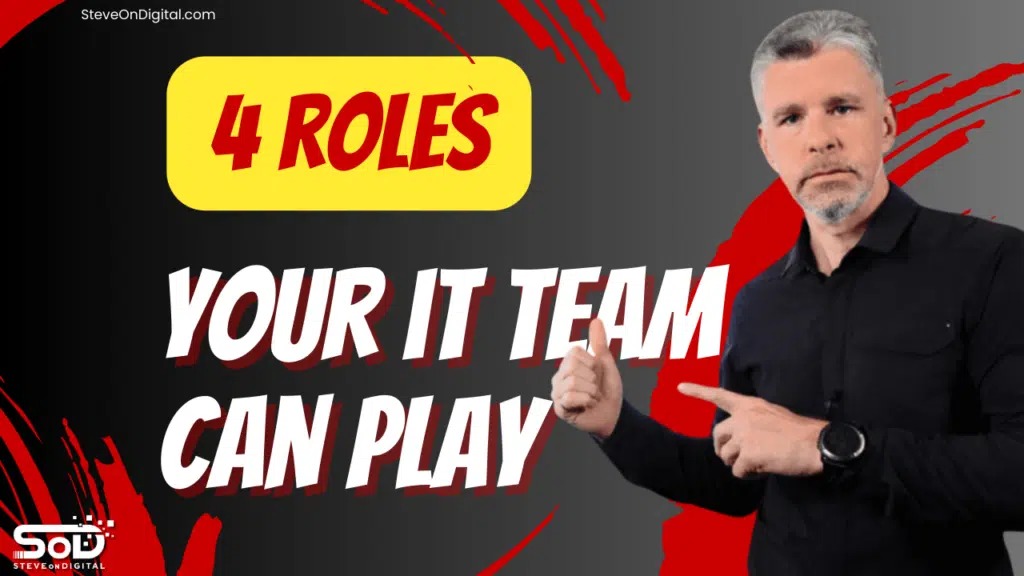
An IT team, led by a visionary IT leader, can be more than just a support function; it can be a strategic partner that drives business growth. By integrating your IT team into strategic planning, you unlock potential for innovation and efficiency, making your business more competitive. I’ve seen how transforming the IT team’s role from a cost center to a strategic driver can lead to significant improvements in business outcomes. This shift not only optimizes operations but also positions the business to thrive in a competitive landscape. I’m Steve, a digital transformation expert with a strong background in electrical engineering, an MBA, and a master’s in Project Management. I excel at helping SMEs navigate the digital landscape with practical insights. Let’s begin! Understanding the Roles of the IT Team The IT team can wear many hats within an organization, each role defining the extent of its impact on business outcomes. From being a cost center to evolving into a strategic driver, the role of IT varies depending on how it’s perceived by senior leadership. IT as a Cost Center Traditionally, many companies, especially small businesses, view the IT department as a cost center. This means that the IT team is primarily seen as a necessary expense—its main function being to maintain current technology and ensure that the day-to-day operations run smoothly. Transactional Relationship with Management In this role, the relationship between IT and management is purely transactional. The IT team is tasked with implementing solutions that are often dictated from the top down. There’s little room for innovation or strategic input. I’ve seen this firsthand in several businesses I’ve consulted for, where IT was kept at arm’s length from any strategic decision-making. This leads to missed opportunities for leveraging technology to drive business growth. This transactional approach often overlooks the importance of maintaining relationships with existing partners and sponsors, which is crucial for long-term success. IT as an IT Provider Moving a step further, some businesses see their IT department as a provider of technology solutions. Here, IT isn’t just about keeping the lights on; it’s about enabling business needs and supporting various projects with the necessary tech resources. Medium-Term Objectives and Limitations However, even in this role, IT often remains largely reactive. The team may be allowed some degree of input and even permitted to experiment within certain limits. But the primary objective is still to meet the immediate and medium-term goals set by the business, without necessarily driving new strategies or innovations. This role reflects a scenario I encountered with a small e-commerce business, where IT was tasked with enhancing the website’s functionality but was not included in broader business planning. IT as a Strategic Partner Now, let’s talk about a role that truly unleashes the potential of the IT team: the strategic partner. Viewing the IT team as a strategic partner means recognizing the unique insights and capabilities that they bring to the table—insights that can shape the company’s future direction. Inclusion in Strategy Meetings In this role, the IT team isn’t just implementing someone else’s vision—they are actively involved in shaping it. Including the IT team in strategy meetings can be a game changer. Partnership leaders play a crucial role in ensuring that IT is included in these discussions, fostering a supportive corporate culture for effective strategic partnerships. When IT is part of the discussion, they can offer solutions that management might not even know are possible. I remember when I started including my IT lead in our strategy sessions; the ideas that emerged were game-changing, from automating marketing processes to improving customer experience through tech-driven solutions. IT as a Strategic Driver For businesses deeply rooted in technology, such as software companies, the IT team often takes on the role of a strategic driver. Here, IT doesn’t just support the business—it drives it. Risk-Taking and Innovation In this role, the IT team is encouraged to take risks and innovate. They’re not just maintaining current systems; they’re pushing the envelope to explore new technologies that could provide a competitive edge. This is particularly important in industries where technological advancements are rapid. Allowing the IT team the freedom to experiment can lead to breakthroughs that drive the entire business forward. For example, I’ve seen tech startups where the IT team’s ability to innovate was directly linked to the company’s growth and success. The Strategic Value of IT in Business Understanding the strategic value of IT is crucial for any business looking to stay competitive. IT is no longer just about keeping the systems running—it’s about driving business success through strategic use of technology. Technology as an Investment, Not an Expense One of the biggest shifts that needs to happen in small businesses is the perception of technology as an investment rather than an expense. This shift in mindset is critical. When I started viewing technology as an investment, I noticed that the return wasn’t just in improved efficiency, but in innovation and business growth. Investing in the right technology can lead to solutions that set your business apart from the competition. Developing a Digital Roadmap A digital roadmap is essential for aligning technology with your business goals. It’s about planning for the future and ensuring that your IT strategy supports your long-term objectives. In my experience, having a digital roadmap helped me stay focused on what mattered most, ensuring that our tech investments were not only effective but also aligned with our business strategy. A well-crafted digital roadmap is essential for managing strategic partnerships, ensuring that all technological initiatives are aligned with long-term business goals. Enhancing Customer Experience through IT Technology plays a pivotal role in improving customer experience. Whether it’s through automating customer service processes, enhancing your website’s user experience, or leveraging data analytics to understand customer behavior, IT can be a significant driver of customer satisfaction. I’ve seen firsthand how integrating IT into customer service strategies can lead to faster response times and more personalized service, which in turn boosts customer loyalty. Building
Make Better Business Decisions: The Data-Information-Knowledge Cycle
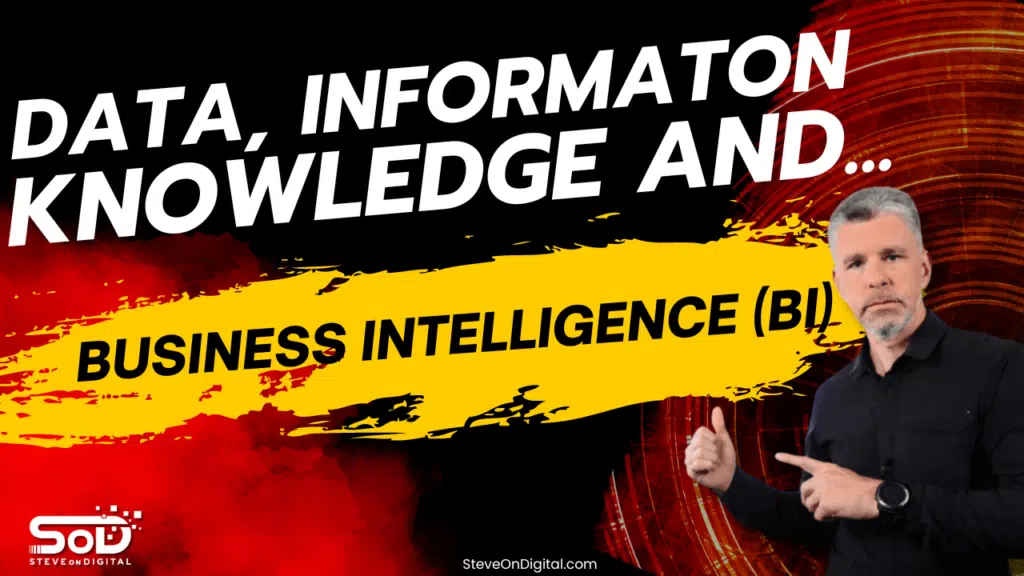
The Data-Information-Knowledge Cycle (DIKW) helps transform raw data into valuable insights. It starts with data, turns it into information, gains knowledge from it, and finally, applies wisdom for better decisions. As the Digital Transformation Specialist, I assist small and medium-sized businesses (SMEs) with practical advice and insights drawn from real-life scenarios. My background includes electrical engineering, an MBA, and a master’s in Project Management. I aim to help 1,000,000 business owners and IT directors navigate the digital landscape. Overview Of The DIKW Cycle The DIKW cycle is a hierarchical model that describes how raw data evolves into valuable wisdom. It’s a step-by-step process that starts with data and moves through information and knowledge before finally arriving at wisdom. This cycle is crucial for business decision-making because it helps us understand the context and meaning behind the raw data we collect. Significance In Business Intelligence The DIKW cycle is the backbone of business intelligence. By following this cycle, we can turn raw data into actionable insights. This not only reduces risks but also helps in making more informed decisions. For example, understanding customer loyalty trends from data can guide us in creating more effective marketing strategies. Understanding The DIKW Cycle Data: The Foundation Data is the starting point of the DIKW cycle. It consists of raw facts and figures without context. In a business context, data can include anything from sales numbers to website traffic statistics. For example, the number of visitors to a website or the number of products sold in a day are pieces of raw data. Types Of Data Data can be broadly categorized into structured and unstructured data. Structured data is organized and easily searchable, like databases and spreadsheets. Unstructured data, on the other hand, includes things like social media posts and emails, which don’t have a pre-defined format. Type of Data Description Examples Structured Data Organized data with a fixed format Databases, Spreadsheets Unstructured Data Unorganized data without a predefined format Social Media Posts, Emails Transforming Data Into Information Data becomes information when it is processed and organized in a way that makes it meaningful. This involves categorizing, labeling, and interpreting data to reveal patterns and trends. For instance, organizing sales data by region can show which areas have the highest sales. Information Overload One of the challenges we face is information overload. With so much data available, it can be difficult to distinguish what’s important. To manage this, we need strategies like data filtering and prioritization to focus on the most relevant information. From Information To Knowledge Knowledge is gained by analyzing and understanding the information we have. This step involves looking at information in context and applying experience and expertise to interpret it. For example, knowing that sales are highest in a specific region during certain months can help plan inventory and marketing efforts. Explicit Vs. Tacit Knowledge Explicit knowledge is easily communicated and shared, like documented processes and procedures. Tacit knowledge, on the other hand, is more intuitive and harder to transfer, such as personal insights and experiences. Both types are valuable in business decision-making. Wisdom: The Pinnacle Wisdom is the final stage of the DIKW cycle. It involves making informed decisions based on the knowledge gained. Wisdom combines understanding with foresight, allowing us to predict outcomes and make strategic decisions. Business Intelligence And Wisdom Business intelligence is essentially applied wisdom. It’s about using the insights gained from the DIKW cycle to make proactive decisions. For example, using knowledge about customer preferences to tailor marketing campaigns can lead to increased sales and customer loyalty. The DIKW Hierarchy In Practice Real-World Applications When I first started applying the Data-Information-Knowledge-Wisdom (DIKW) cycle in my business, the transformation was remarkable. The DIKW cycle isn’t just a theoretical concept; it’s a practical tool that can revolutionize the way we operate. Let me share some examples from my own experience and other business scenarios. One real-world application of the DIKW cycle is in managing customer feedback. Initially, customer comments and reviews were just raw data. By categorizing these comments into positive and negative feedback, I turned data into information. Analyzing this information revealed patterns, such as common complaints about a specific product feature. This knowledge allowed me to make informed decisions to improve that feature, ultimately leading to increased customer satisfaction. Case Study: Marketing Strategy Implementing the DIKW cycle in marketing was a game-changer for me. Here’s a detailed example of how it can be used to create a targeted marketing campaign. Role In Customer Loyalty And Employee Satisfaction The DIKW cycle is also instrumental in enhancing customer loyalty and employee satisfaction. Here’s how I’ve seen it work: Benefits Of Implementing The DIKW Cycle Enhanced Decision-Making One of the most significant benefits of the DIKW cycle is its impact on decision-making. By following the DIKW process, I ensure that my decisions are based on solid data and informed analysis. This leads to more accurate and effective business strategies. For example, using historical sales data to forecast future demand helps in making better inventory decisions. Risk Management Implementing the DIKW cycle also plays a crucial role in risk management. By analyzing data and information, I can identify potential risks and develop strategies to mitigate them. For instance, monitoring market trends and competitor actions allows me to anticipate changes and adapt my strategies accordingly, reducing the risk of business losses. Improved Business Intelligence The DIKW cycle enhances business intelligence by providing deeper insights into various aspects of the business. By turning raw data into actionable wisdom, I can make more informed decisions that drive business growth. For example, understanding customer behavior patterns helps in tailoring marketing efforts to meet their needs more effectively. Benefit Description Enhanced Decision-Making Provides a structured approach to make informed decisions based on solid data Risk Management Identifies potential risks and develops strategies to mitigate them Improved Business Intelligence Offers deeper insights into various business aspects, aiding in strategic planning Tools And Technologies For DIKW Data Collection Tools Effective data collection is the foundation
People-Process-Technology Analysis: People At The Core
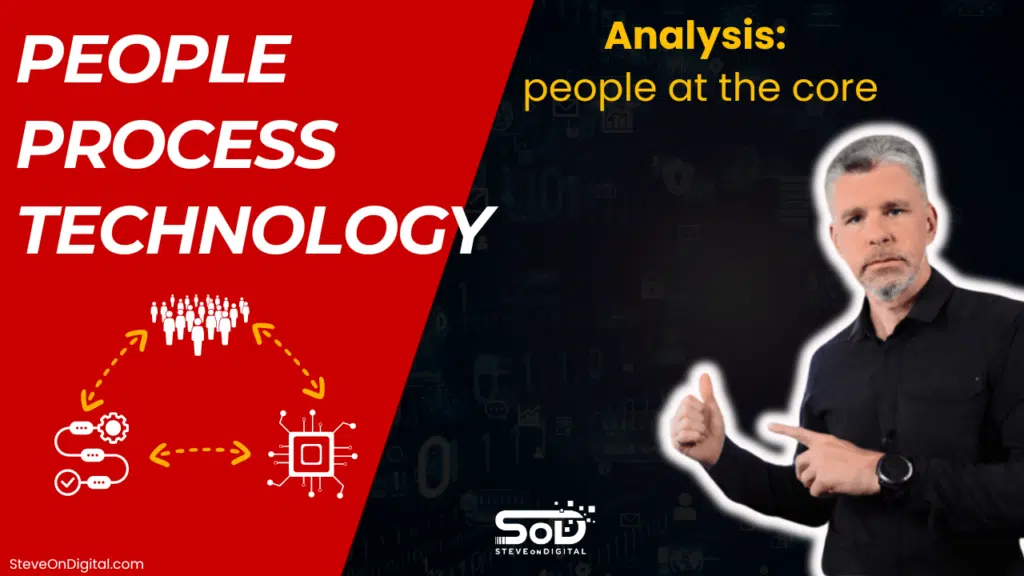
People-Process-Technology (PPT) analysis is crucial for optimizing business operations. It ensures that people, processes, and technology work together seamlessly, enhancing efficiency and success. As a Digital Transformation Specialist with expertise in helping small and medium-sized businesses, I leverage my background in electrical engineering, an MBA, and a master’s in Project Management to guide businesses through the digital landscape. My goal is to assist 1,000,000 business owners and IT directors with practical advice and insights from real-life scenarios. In this blog, I will break down the PPT framework and explain how to use it to transform your business effectively. Understanding The People-Process-Technology Framework The People-Process-Technology framework serves as a strategic approach to managing business operations. This framework helps in identifying the strengths and weaknesses within an organization and provides a roadmap for improvements. People Component The people component focuses on the human resources within an organization. This includes employees’ skills, experience, and engagement levels. It’s crucial to understand that people are not just resources but the core drivers of innovation and productivity. Proper training and continuous development are essential to keep the workforce competent and motivated. For example, when I implemented a new customer relationship management (CRM) system in my business, I ensured that every team member received adequate training. This not only improved their proficiency but also boosted their confidence and job satisfaction. Process Component Processes are the systematic steps and procedures that guide how tasks are performed within an organization. Well-defined processes are critical for achieving consistency, efficiency, and quality. They help in streamlining workflows and eliminating bottlenecks. During one of my projects, I realized that our existing processes were causing delays in project delivery. By conducting a thorough analysis and implementing process improvements, we were able to reduce turnaround times and enhance overall productivity. Technology Component Technology acts as the enabler within the PPT framework. It provides the tools and platforms necessary for automating tasks, improving communication, and enhancing productivity. The rapid pace of technological advancements means that businesses must continuously adapt and integrate new technologies to stay competitive. In my experience, adopting cloud computing solutions significantly improved our data management and collaboration capabilities, leading to better decision-making and faster project execution. The Interplay Between People, Process, And Technology The true power of the PPT framework lies in the interplay between its three components. People use technology to perform processes. In turn, technology can streamline processes and make them more efficient, freeing up people to focus on more strategic tasks. This cyclical relationship creates a dynamic environment where continuous improvement is possible. For instance, by integrating a new project management tool, I was able to automate routine tasks, allowing my team to concentrate on more critical aspects of our projects, ultimately achieving better results. The Core Principles Of People-Process-Technology Understanding the core principles of People-Process-Technology (PPT) is essential for any business striving for success in today’s digital age. This framework helps in achieving organizational efficiency by ensuring that all three components work together harmoniously. Let’s dive into each component of the PPT framework and explore its significance. People Component The people component is the heart of the PPT framework. It’s all about the individuals who work within the organization. Their skills, engagement, and adaptability play a crucial role in driving business success. Skills And Training Proper training is vital for effective technology adoption. When I first introduced a new customer relationship management (CRM) system in my business, I realized that training my team was the key to its success. Without adequate training, even the best technology can become a burden rather than a benefit. Investing in continuous skill development ensures that employees stay up-to-date with the latest technological advancements and can utilize them effectively. Skill Current Proficiency Level Required Proficiency Level Training Needed Customer Service Intermediate Advanced Advanced Customer Service Workshop Project Management Beginner Intermediate Project Management Basics Course Data Analysis Intermediate Advanced Advanced Data Analysis Techniques Employee Engagement Maintaining high levels of employee engagement during technological changes is another crucial aspect. Engaged employees are more productive and motivated. One strategy I found effective was involving my team in the decision-making process when introducing new technologies. This not only made them feel valued but also reduced resistance to change. According to a Gallup report, businesses with highly engaged employees see a 21% increase in profitability. Process Component Processes are the structured methods and practices that guide how work is done within an organization. They are the backbone of operational efficiency and quality. Process Improvement Identifying and improving existing processes is essential for increasing efficiency. In my experience, conducting regular process audits helps in pinpointing inefficiencies and areas for improvement. For example, by streamlining our project management process, we were able to reduce project delivery times by 20%. Continuous improvement should be a core principle in every business. Process KPI Current Value Target Value Improvement Plan Order Processing Cycle Time 48 hours 24 hours Implement automation software Customer Support Response First Response Time 6 hours 1 hour Introduce AI-based support system Inventory Management Stock Accuracy 85% 95% Deploy RFID technology Process Deployment Deploying new processes involves careful planning and integration with existing ones. When I implemented a new project management tool, it was crucial to ensure that it aligned with our current workflows. This required a detailed analysis of our existing processes and strategic planning to integrate the new tool seamlessly. This step is critical to avoid disruptions and ensure smooth transitions. Technology Component The technology component of the PPT framework focuses on the tools and platforms that enable and enhance business operations. It includes everything from software applications to hardware infrastructure. New Technologies Evaluating and implementing new technologies effectively is crucial for staying competitive. I always start by assessing the specific needs of my business and then researching technologies that can address those needs. For instance, adopting cloud computing solutions significantly improved our data management and collaboration capabilities. It’s important to stay informed about the latest technological advancements and choose solutions that offer the most value.
Creating A Coordinated Strategy Throughout Your Digital Journey
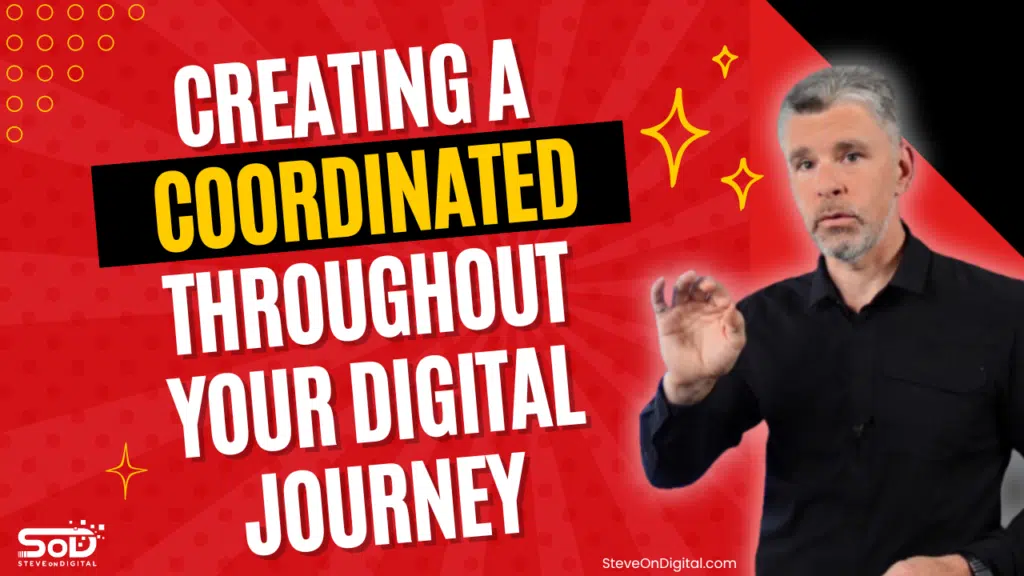
Creating a coordinated strategy helps businesses streamline operations, align goals, and save time and resources, ultimately driving success. I, Steve Johnston, am a Digital Transformation Specialist with expertise in helping small and medium-sized businesses navigate the digital landscape. My background in electrical engineering, an MBA, and a master’s in Project Management allow me to offer practical advice and insights to SMEs. Understanding Coordinated Strategy To create a coordinated strategy, you need to understand what it entails and why it is vital for your business. Definition And Importance A coordinated strategy aligns various business functions to work towards common goals and objectives. It involves strategic planning, project management, and continuous monitoring. This strategy ensures that all departments are on the same page, reducing conflicts and improving efficiency. For example, in my experience, when all teams understand the common goal, it reduces duplicated efforts and wasted time. Key Benefits A well-executed coordinated strategy brings numerous benefits: Steps To Create A Coordinated Strategy Here are the detailed steps I follow to create a coordinated strategy. Identifying Business Goals And Objectives Start by clearly defining your business goals and objectives. This step is critical as it lays the foundation for your strategy. Make sure these goals are specific, measurable, achievable, relevant, and time-bound (SMART). Conducting A Strategic Planning Process The strategic planning process involves evaluating your current position, identifying opportunities, and setting a clear path forward. Here’s how I usually approach this: Step Description Assess Current Situation Analyze strengths, weaknesses, opportunities, and threats (SWOT analysis) Set Strategic Objectives Define objectives based on SWOT analysis Develop Action Plans Outline detailed action plans to achieve objectives Involving Key Stakeholders Involving key stakeholders in the planning process is essential. This includes team members from various departments, as their input can provide valuable insights. In my practice, I always ensure that all relevant parties are engaged in the planning process to avoid silos and foster collaboration. Essential Components Of A Coordinated Strategy A coordinated strategy comprises several critical components. Clear Communication Channels Effective communication is the backbone of a coordinated strategy. Establishing clear communication channels ensures that everyone is informed and aligned with the strategic goals. Regular meetings and updates are essential to keep the team on track. Resource Allocation Efficient resource allocation is crucial for achieving your strategic goals. This involves distributing sufficient resources, such as time, money, and personnel, to where they are most needed. I always emphasize the importance of proper resource allocation to avoid bottlenecks and delays. Horizontal Coordination Horizontal coordination refers to the collaboration across different departments. It’s essential to break down departmental barriers and promote teamwork. For instance, I’ve seen how effective horizontal coordination can lead to innovative solutions and timely completion of projects. Role Of Project Management In Strategy Project management plays a crucial role in integrating and supporting a coordinated strategy. It ensures that all strategic initiatives are executed efficiently and effectively, leading to project success and the achievement of business goals. I’ve witnessed how robust project management practices can transform ideas into actionable plans, driving progress and innovation. Project Manager’s Role A project manager is at the heart of strategy execution. Their responsibilities include: A good project manager is like the captain of a ship, steering the team through the strategic planning process to reach the desired outcomes. Tracking Project Progress Monitoring and tracking project progress is essential for strategy execution. Here are some methods I find effective: By keeping a close eye on project progress, you can make informed decisions and adjustments to stay on course. Utilizing Data Analysis Tools Data analysis tools are indispensable for creating and executing a coordinated strategy. They provide valuable insights that inform decision-making and strategy refinement. Types Of Data Analysis Tools There are various data analysis tools available, each serving different purposes: Tool Type Examples Purpose Business Intelligence Tableau, Power BI Visualize data and identify trends Statistical Analysis SPSS, SAS Conduct in-depth statistical analysis Predictive Analytics RapidMiner, KNIME Forecast future trends and outcomes Each tool has its strengths and can be used to gain different types of insights. Benefits Of Data Analysis Data analysis offers several benefits: I’ve seen how leveraging data analysis tools can turn raw data into actionable insights, driving better strategy execution and project success. Setting Key Performance Indicators (KPIs) Establishing KPIs is essential to measure the success of your coordinated strategy. They serve as benchmarks to track progress and evaluate performance. Identifying Relevant KPIs When selecting KPIs, consider the following criteria: KPI Description Example Target Customer Satisfaction Score Measures customer satisfaction with products/services Achieve an average score of 8/10 Sales Growth Rate Measures the rate of increase in sales over time 10% growth per quarter Employee Productivity Measures the output of employees Complete 5 projects per month For example, if improving customer satisfaction is a goal, a relevant KPI might be the Net Promoter Score (NPS). Monitoring And Adjusting Kpis Monitoring KPIs is a continuous process. Here’s how I do it: By actively monitoring and adjusting KPIs, you can keep your strategy on track and achieve your business objectives. Mitigation Strategies For Potential Issues Creating a coordinated strategy isn’t without its challenges. It’s important to anticipate potential issues and have mitigation strategies in place to address them effectively. I’ve encountered various obstacles in my career, and having a plan to tackle them is crucial for project success. Common Challenges Here are some typical issues that might arise during strategy implementation: Solutions And Best Practices To overcome these challenges, I’ve found the following solutions and best practices to be effective: Common Challenges Solutions and Best Practices Communication Breakdowns Establish clear communication channels and encourage open dialogue Resource Constraints Prioritize resource allocation to critical tasks and ensure sufficient resources Resistance to Change Implement change management strategies, including training and support Lack of Clear Goals Define clear, measurable goals and objectives Importance Of Regular Meetings Regular meetings play a vital role in ensuring strategy alignment and progress. They provide an opportunity for team members to discuss updates, address potential
